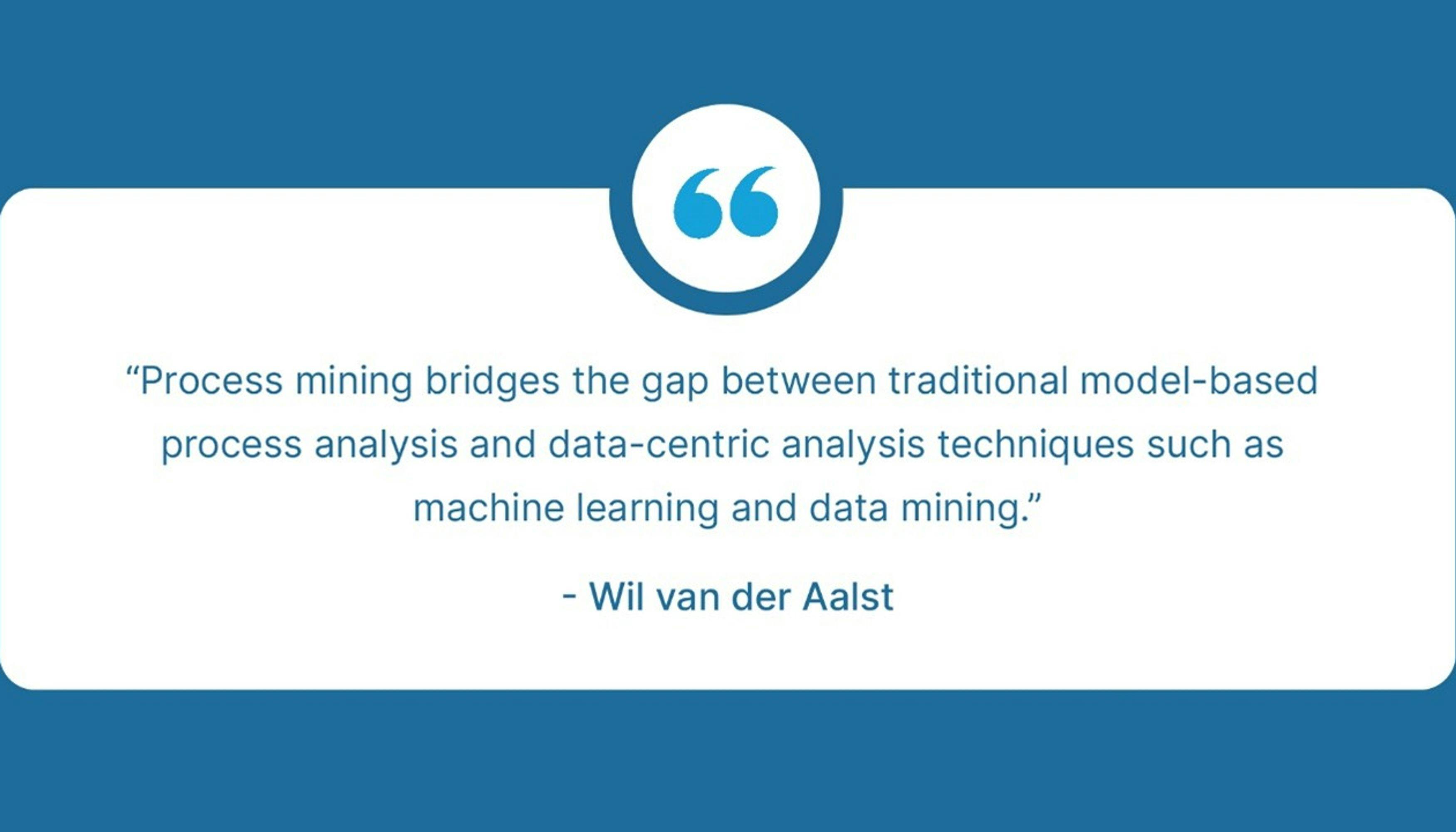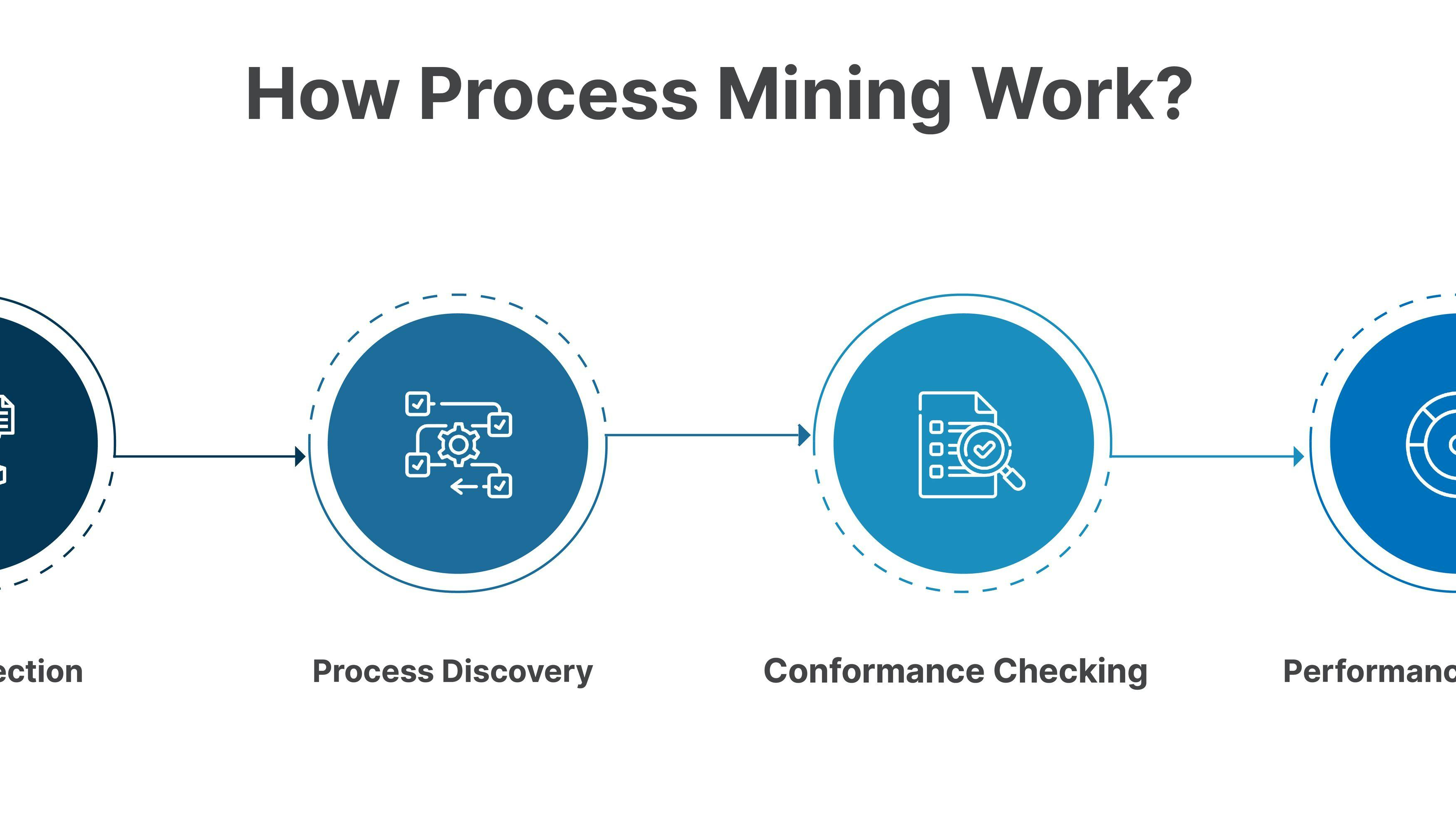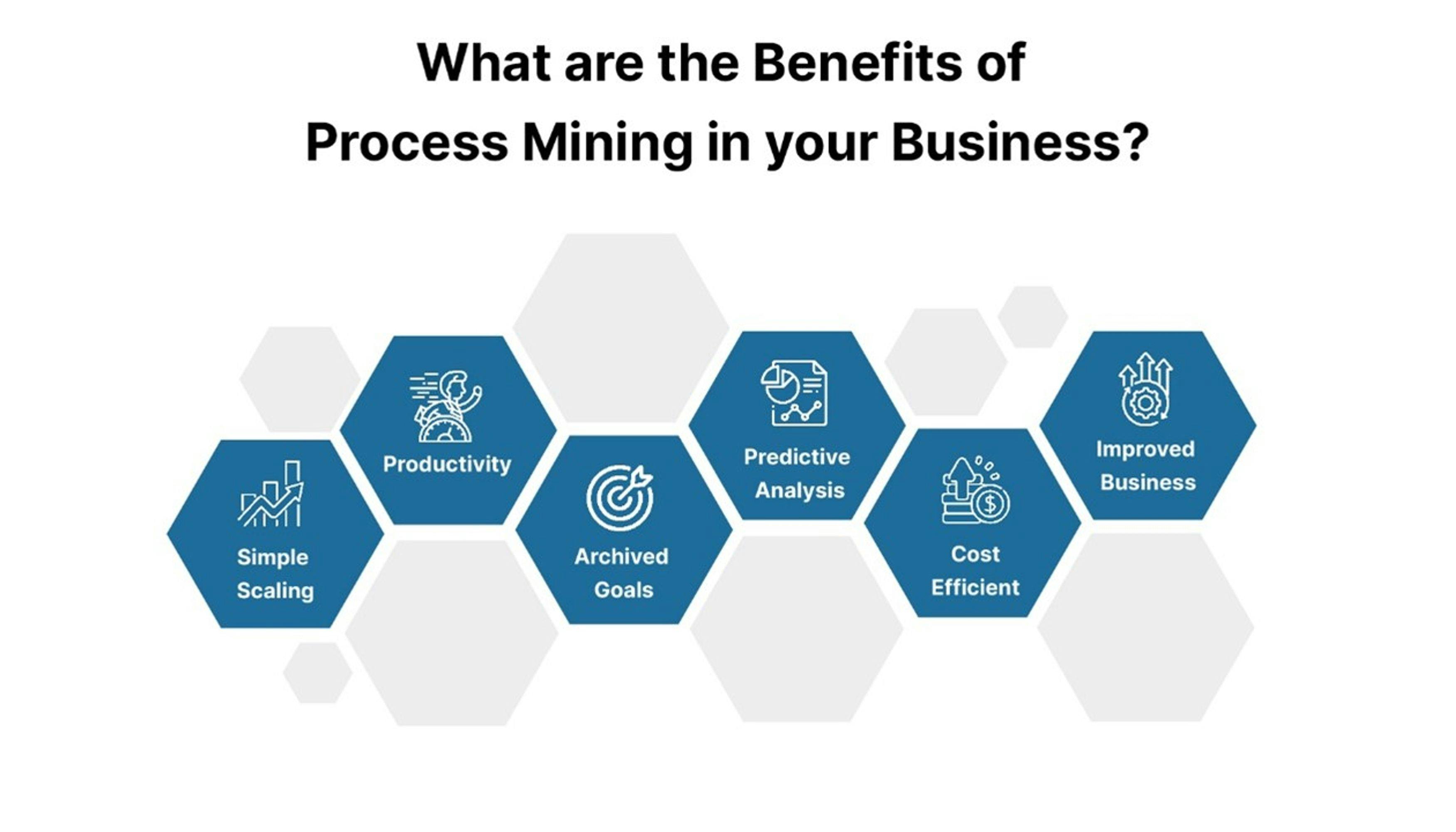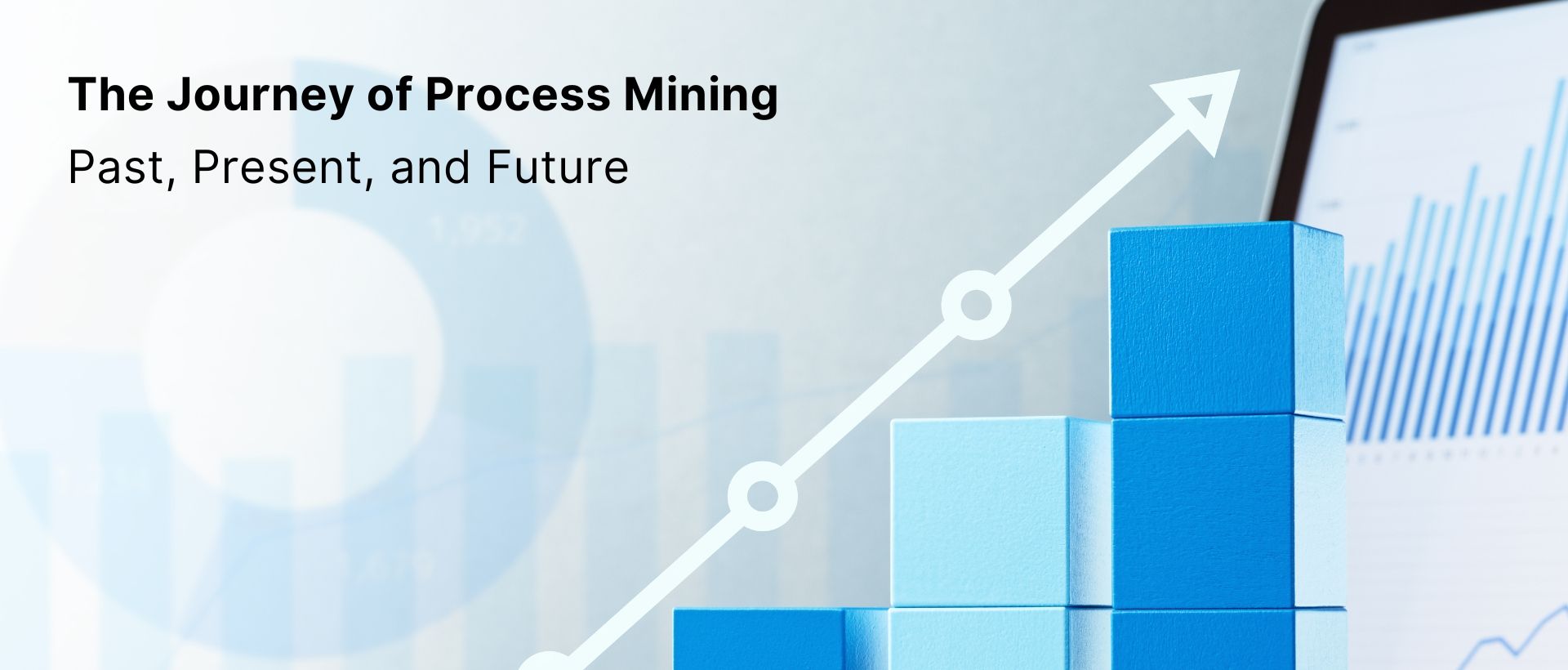
The Journey of Process Mining: Past, Present, and Future
Since the 19th Century, businesses have sought solutions to manage their processes and reduce inefficiencies. In recent times, process mining has become a significant technology in industry worldwide. But when and how did it come into existence? In this blog, we will explore the emergence of process mining and its role in business across industries. Let's take a deep dive from what is process mining to its future.

Grace Catharine
Content Writer
Table of contents
Before getting into process mining, first begin with the base of it, which is database management. Database management came into existence in the 19th Century, helping businesses with data mining. However, they still needed technology to eliminate process inefficiencies. In the late 20th C, Wil van der Aalst invented process mining in his research. Organizations started implementing process mining in the upcoming years of the 21st C, making it a part of digital transformation in every business.

Process Mining is a process intelligence technology that identifies, analyzes, and upgrades business processes. This is executed by existing collected information from event logs. Process mining is a broad area that includes process discovery, conformance checking, process automation, etc. Process mining enhances business operations and keeps the business out of competition.
After knowing that process mining technology would transform the whole business, the following central question is how it works. It aims to discover, monitor and improve real business processes by extracting knowledge from event logs that are available in most modern information systems. The process mining steps are data collection, process discovery, conformance checking, and performance evaluation.

The process mining approach involves four main steps: data collection, process discovery, conformance checking, and performance evaluation.
The first step in process mining is gathering or collecting the event logs from the relevant information systems and preparing them for analysis. The data may be required to be cleaned, duplicates removed, and formatted to be appropriately analyzed.
The collected event logs will be subjected to process discovery techniques to create an automated process model. Several process modeling representations, such as BPMN or Petri nets, can be used to visualize this paradigm. In making new process models, the existing models are not informed.
To represent the execution of the process, the process model may need to be adjusted. Once the process model is created, conformity-checking tools are used to find differences between the actual process execution and the anticipated process model. This can assist in discovering areas for process improvement.
The last stage in process mining is applying performance analytic tools to derive insights about process performance. The process can be optimized, and company performance can be raised using these insights. This may entail locating bottlenecks, examining cycle times, and evaluating the process's overall efficacy
Organizations have incorporated process mining across industries for various important reasons.
- It helps you understand the as-is and to-be processes in your business.
- It identifies the bottlenecks that slow down or halt the process from moving further.
- It improves process productivity and reduces cost by deducting the process inefficiencies.
- It enhances the customer experience by optimizing the operations and making them user-friendly.
Process mining makes it easier for businesses to scale their operations by assisting them in locating inefficiencies and growth-restraining obstacles.
Companies can increase overall productivity by automating operations, streamlining procedures, and minimizing manual involvement.
It gives businesses insights into how processes are operating, assisting them in identifying opportunities for optimization and achieving their objectives.
Preventive steps help to avoid bottlenecks and inefficiencies by foreseeing future trends and patterns in corporate processes.
It enables businesses to cut expenses by identifying inefficiencies and bottlenecks, improving workflows, and automating repetitive procedures.
It offers insightful information to help make better decisions, optimize processes, and raise overall productivity.

When it comes to the implementation part, many tools are available in the market. However, choosing the right tool to optimize your processes would be best. Our experts at Ennuviz guide you in selecting the best tool for your business. The top few process mining tools stated by
- Celonis Process Mining
- IBM Process Mining
- UiPath Process Mining
- SAP Signavio Process Intelligence
- QPR Process Analyzer
With the above benefits of process mining, you can understand how it would improve businesses. Process mining will positively impact the business world with its data science and analytical approach to digital transformation. It will also become the game changer in the industry with its standardized strategies. Digital transformation has become common in technology, and process mining with other technologies revolutionizes business.
In the digital world, businesses have realized the value of process mining. Starting from discovery to execution, process mining improves all business processes. With the rise of big data and the Internet of Things (IoT), process mining will become even more significant in optimizing business operations across industries. This field is expected to have innovation and continued growth in the upcoming years.
Process Mining is an iterative and ongoing process. It is essential to regularly assess and refine your operations to drive continuous improvement and maximize the benefits of Process Mining. To begin with, the process mining identifies the pinpoint areas of concern, collects data, and subsequently conducts a pilot project. This analysis evaluates the existing state of business processes, identifies issues, and provides suggestions for improvement. Ennuviz's process mining implementation involves the following stages to get started.
Process Mining starts with problem identification. This involves understanding the organization’s current state with its processes and identifying any problems or bottlenecks that needs to addressed. Determine the specific objectives you want to achieve through Process Mining. Identify pain points or areas of improvement within your business processes that you want to address.
Once the problem has been identified, mining and analysis can be done to uncover further insights into the process. This can provide a comprehensive view of how operations are currently running and how they could be improved.
This information can create a proof of value, showing how beneficial the changes are for the organization. This involves demonstrating that the changes made in your Process Mining efforts are producing tangible results.
Finally, process enhancements will get started based on these insights, leading to improved efficiency and productivity in the organization. After this step is complete, further enhancements can be made based on the results of the POV.
By using Process Mining, organizations can improve operational efficiency and reduce costs associated with manual labor or inefficient processes. With these steps in mind, companies can get started with Process Mining quickly and easily.
As organizations continue to implement this technology, we expect to see more tools and techniques for deeper insights into business processes. From automation to predictive analytics, the possibilities for process mining are endless. Process mining will become essential for success with the increasing pressure to optimize business operations and gain a competitive edge. If you haven’t adopted process mining, get started with us.
Evolution of Process Mining
Before getting into process mining, first begin with the base of it, which is database management. Database management came into existence in the 19th Century, helping businesses with data mining. However, they still needed technology to eliminate process inefficiencies. In the late 20th C, Wil van der Aalst invented process mining in his research. Organizations started implementing process mining in the upcoming years of the 21st C, making it a part of digital transformation in every business.

What is Process Mining?
Process Mining is a process intelligence technology that identifies, analyzes, and upgrades business processes. This is executed by existing collected information from event logs. Process mining is a broad area that includes process discovery, conformance checking, process automation, etc. Process mining enhances business operations and keeps the business out of competition.
How does Process Mining Work?
After knowing that process mining technology would transform the whole business, the following central question is how it works. It aims to discover, monitor and improve real business processes by extracting knowledge from event logs that are available in most modern information systems. The process mining steps are data collection, process discovery, conformance checking, and performance evaluation.

The process mining approach involves four main steps: data collection, process discovery, conformance checking, and performance evaluation.
Data Collection
The first step in process mining is gathering or collecting the event logs from the relevant information systems and preparing them for analysis. The data may be required to be cleaned, duplicates removed, and formatted to be appropriately analyzed.
Process Discovery
The collected event logs will be subjected to process discovery techniques to create an automated process model. Several process modeling representations, such as BPMN or Petri nets, can be used to visualize this paradigm. In making new process models, the existing models are not informed.
Conformance Checking
To represent the execution of the process, the process model may need to be adjusted. Once the process model is created, conformity-checking tools are used to find differences between the actual process execution and the anticipated process model. This can assist in discovering areas for process improvement.
Performance Evaluation
The last stage in process mining is applying performance analytic tools to derive insights about process performance. The process can be optimized, and company performance can be raised using these insights. This may entail locating bottlenecks, examining cycle times, and evaluating the process's overall efficacy
Why Process Mining?
Organizations have incorporated process mining across industries for various important reasons.
- It helps you understand the as-is and to-be processes in your business.
- It identifies the bottlenecks that slow down or halt the process from moving further.
- It improves process productivity and reduces cost by deducting the process inefficiencies.
- It enhances the customer experience by optimizing the operations and making them user-friendly.
Benefits of Process Mining
Simple Scaling
Process mining makes it easier for businesses to scale their operations by assisting them in locating inefficiencies and growth-restraining obstacles.
Productivity
Companies can increase overall productivity by automating operations, streamlining procedures, and minimizing manual involvement.
Archived Goals
It gives businesses insights into how processes are operating, assisting them in identifying opportunities for optimization and achieving their objectives.
Predictive Analysis
Preventive steps help to avoid bottlenecks and inefficiencies by foreseeing future trends and patterns in corporate processes.
Cost Efficient
It enables businesses to cut expenses by identifying inefficiencies and bottlenecks, improving workflows, and automating repetitive procedures.
Improve Business
It offers insightful information to help make better decisions, optimize processes, and raise overall productivity.

Tools for Process Mining
When it comes to the implementation part, many tools are available in the market. However, choosing the right tool to optimize your processes would be best. Our experts at Ennuviz guide you in selecting the best tool for your business. The top few process mining tools stated by
- Celonis Process Mining
- IBM Process Mining
- UiPath Process Mining
- SAP Signavio Process Intelligence
- QPR Process Analyzer
Role of Process Mining in Digital Transformation
With the above benefits of process mining, you can understand how it would improve businesses. Process mining will positively impact the business world with its data science and analytical approach to digital transformation. It will also become the game changer in the industry with its standardized strategies. Digital transformation has become common in technology, and process mining with other technologies revolutionizes business.
Future of Process Mining
In the digital world, businesses have realized the value of process mining. Starting from discovery to execution, process mining improves all business processes. With the rise of big data and the Internet of Things (IoT), process mining will become even more significant in optimizing business operations across industries. This field is expected to have innovation and continued growth in the upcoming years.
Get Started with Process Mining
Process Mining is an iterative and ongoing process. It is essential to regularly assess and refine your operations to drive continuous improvement and maximize the benefits of Process Mining. To begin with, the process mining identifies the pinpoint areas of concern, collects data, and subsequently conducts a pilot project. This analysis evaluates the existing state of business processes, identifies issues, and provides suggestions for improvement. Ennuviz's process mining implementation involves the following stages to get started.
Problem Identification
Process Mining starts with problem identification. This involves understanding the organization’s current state with its processes and identifying any problems or bottlenecks that needs to addressed. Determine the specific objectives you want to achieve through Process Mining. Identify pain points or areas of improvement within your business processes that you want to address.
Mining & Analysis
Once the problem has been identified, mining and analysis can be done to uncover further insights into the process. This can provide a comprehensive view of how operations are currently running and how they could be improved.
Proof of Value
This information can create a proof of value, showing how beneficial the changes are for the organization. This involves demonstrating that the changes made in your Process Mining efforts are producing tangible results.
Process Enhancements
Finally, process enhancements will get started based on these insights, leading to improved efficiency and productivity in the organization. After this step is complete, further enhancements can be made based on the results of the POV.
By using Process Mining, organizations can improve operational efficiency and reduce costs associated with manual labor or inefficient processes. With these steps in mind, companies can get started with Process Mining quickly and easily.
Conclusion
As organizations continue to implement this technology, we expect to see more tools and techniques for deeper insights into business processes. From automation to predictive analytics, the possibilities for process mining are endless. Process mining will become essential for success with the increasing pressure to optimize business operations and gain a competitive edge. If you haven’t adopted process mining, get started with us.
Recommended Blogs


 Grace Catharine
Grace CatharineHow Intelligent Automation Aids The Healthcare Industry

 Grace Catharine
Grace CatharineHow Intelligent Automation Aids The Healthcare Industry

 Grace Catharine
Grace CatharineHow Intelligent Automation Aids The Healthcare Industry
Let's get started today
Because we put you first. Our customer-obsessed working model honors client's needs.
Schedule DemoJoin our Newsletter. Stay Connected
Empowering Leaders to Transform the Future
Fuel your ambition with expert insights and strategies to drive your Business Transformation. For growth-minded leaders, this is where innovation meets opportunity. Stay bold and lead the curve!

 Ennuviz
Ennuviz

 Nancy Elvira
Nancy Elvira
 Scott Defries
Scott Defries